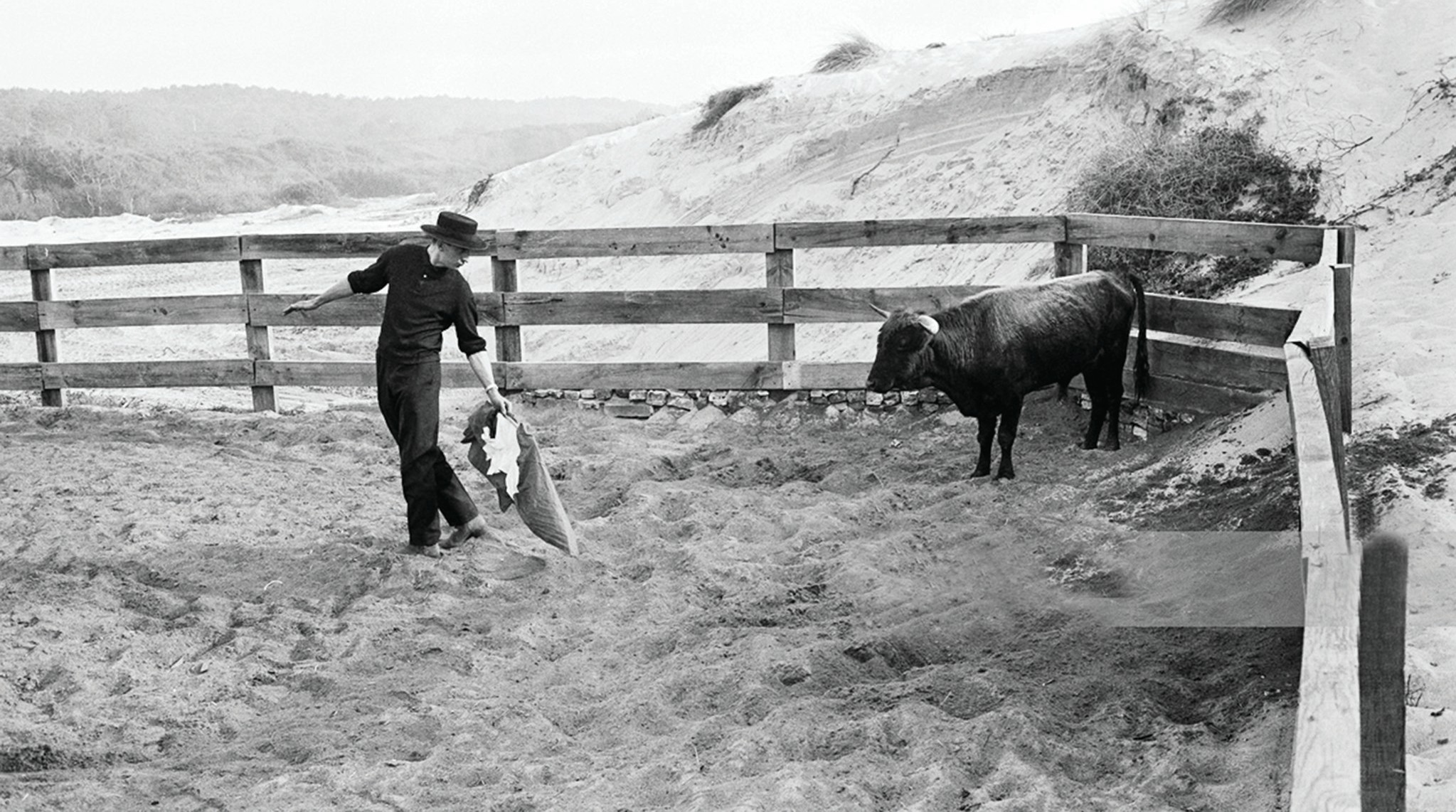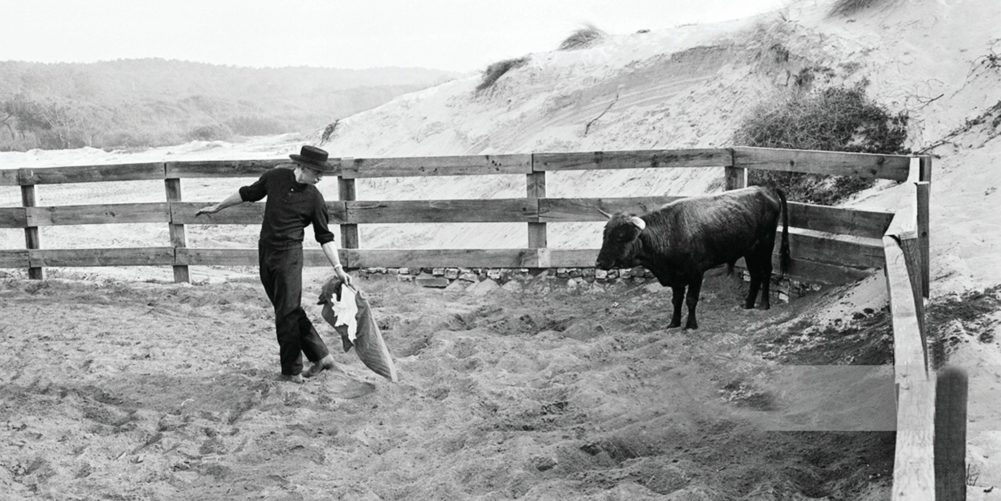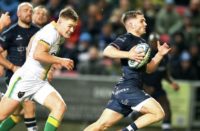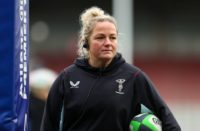Brendan Gallagher delves into some of rugby's most enduring images, their story and why they are still so impactful

Iconic Rugby Pictures:
PART 104 Pierre Albaladejo tests his wits in the bull ring
April 1964
What's happening here?
It's April 1964 and France fly-half Pierre Albaladejo is enjoying a few days away from rugby at his seaside ranch in Hossegor training up a very young bull. He is wearing a Cordovan, Flamenco-style hat and is brandishing his muleta and although there is a relaxed holiday atmosphere Albaladejo is running the gauntlet a little. But then as a fly-half playing in and for France he is used to living dangerously. Albaladejo was a glamorous figure with a striking similarity to the legendary Spanish matador Louis Miguel Dominguin, one of the key figures in Hemingway's The Dangerous Summer that had appeared in Life magazine a couple of years earlier.
The story behind the picture?
Albaladejo was born in Dax and has lived all his life there and like many in the region has strong Spanish antecedents. His father was from Andalucía and his mother was French Basque and bullfighting was part of their lives, every bit as much as rugby. Go into any Dax bar and there will be rugby and bullfighting memorabilia, posters and gossip in equal measure.
Albaladejo devoted himself to both. An exceptional rugby talent, he spent a career playing exclusively for his hometown team at Stade Maurice Boyau and spent his remaining leisure hours a couple of hundred yards away at the striking Arenas de Dax watching the corridas at the very Moorish looking bull ring. Dax was one of Hemingway's favourite arenas and where the famous picture of him and Lauren Bacall was taken during that dangerous summer of 1959, a fierra that Albaladejo also attended.
He was a bullfighting aficionado, a ganadero bred and trained bulls and, when the Dax coaches and selectors were not watching, climbed into the ring at local festivals in the summer to take on callow young bulls in a sanitised version of the sport – course landaise – that did not involve their killing, just the “sport” and choreography of trying to outwit each other.
What happened next?
It was coming to the close of a glorious rugby career for Albaladejo. He had just been an integral part of another France Championship side, the fourth he had claimed with Les Bless and there had been talk of imminent retirement which is why I suspect a photographer had been dispatched to capture some “at home” type of pictures but actually he wasn't quite finished.
That summer he toured South Africa and contributed to a notable Test win by Les Bleus in Springs. There had been controversy early during the trip when he spent an hour playing rugby with young black kids after French training, which was captured by a photographer and plastered over the front pages of the South African press. South Africa demanded that Albaladejo be sent home but the French insisted they would all go home in that case. He stayed.
Albaladejo announced his retirement from Test rugby but that September, after playing for Dax in Bordeaux, his brother and two friends gave him a lift to the railway station where he caught the overnight train to Paris. He woke up the following morning to hear that all three had been killed in a car crash on the drive back to Dax. To honour their deaths he came out of retirement to play one more international, against Fiji that autumn.
Why is this picture iconic?
It helps you understand the panache and occasional volatility of French rugby, especially that played in the sunny south west where the Basque and Spanish influence is at its greatest. It's a very foreign land and culture to us in Britain and Ireland, indeed it's alien to 90 per cent of those who live in France.
You need ticker and bravado to climb into the ring, even against a young callow bull, but you also need footwork, timing, intelligence and an animal like cunning.
Albaladejo brought all this to the rugby field and particularly his penchant for a dropped goal – he landed 12 in his 30 Tests. In 1961 he struck up a friendship with the great All Black full-back Don Clarke when France were on tour and Clarke invited the Frenchman to his farm – where he had erected some makeshift posts to learn the tricks of the trade. A couple of days earlier Albaladejo had kicked two dropped goals against the Kiwis, one with his left foot and another with his right.
“Don's kicking style was excellent for penalties but he was finding the dropped goal difficult,” recalled Albaladejo. “I realised why the moment I watched him at close quarters. In terms of kicking he had become a disciplined, organised, reliable, robot. But kicking dropped goals is purely a matter of instinct. The instinct of the dropped kick is that of the hunted animal that is defending itself.”
Albaladejo certainly had it in his blood. When he dallied in the ring he was both hunter and hunted and of course he has watched hundreds, possibly, thousands of fights over the years at Dax. He knew exactly when to strike.
Footnote: Albaladejo went on to enjoy a stellar 30 year career in the French media as the long-time cocommentator with Roger Couderac. For nearly 20 years he also presented a specialist bullfighting magazine programme, Toromania, on France 3 Aquitaine.



























